Last updated on
Discover the cost of painting your kitchen ceiling as we delve into factors that influence pricing and provide tips for getting the best deal.
Painting is one of the easiest and most affordable ways to give your home a fresh new look. But when it comes to painting a kitchen ceiling, many homeowners are left wondering how much it will cost.
The answer is not as straightforward as you might think, as there are several factors that can affect the final price tag. In this article, we’ll take a closer look at what goes into calculating the cost of painting a kitchen ceiling and provide some tips on how to keep your expenses under control without sacrificing quality.
So if you’re planning to spruce up your kitchen with a fresh coat of paint, keep reading!
What's Inside
Factors Affecting Painting Costs

One of the most significant is the size and area to be painted. The larger your kitchen, the more paint you’ll need, which will increase your overall expenses.
If there are any intricate designs or patterns on your ceiling that require extra attention from a painter, this could also drive up costs.
Another factor to consider is whether you plan on doing it yourself or hiring a professional painter. While DIY painting may seem like an affordable option at first glance since you won’t have to pay for labor costs; however, keep in mind that purchasing all necessary tools and supplies can add up quickly.
The type of paint used also plays an essential role in determining how much it will cost to paint your kitchen ceiling. Different types come with varying price tags based on their quality and durability levels.
Area and Size Considerations in Cost

The larger the area, the more paint and supplies you’ll need to cover it adequately. A higher ceiling may require specialized equipment or additional labor hours to complete.
When calculating costs based on size, painters typically charge per square foot or by linear feet for crown molding and trim work. For example, if your kitchen has a 10-foot high ceiling with an area of 200 square feet (20′ x 10′), you can expect to pay more than someone with an eight-foot-high ceiling in a smaller space.
It’s essential to measure accurately before getting quotes from professional painters or purchasing materials for DIY projects. This way, you can get accurate estimates and avoid any surprises when it comes time to pay.
Keep in mind that other factors such as surface preparation requirements and paint finish options may also impact pricing based on your kitchen’s specific needs.
Types of Ceiling Paint
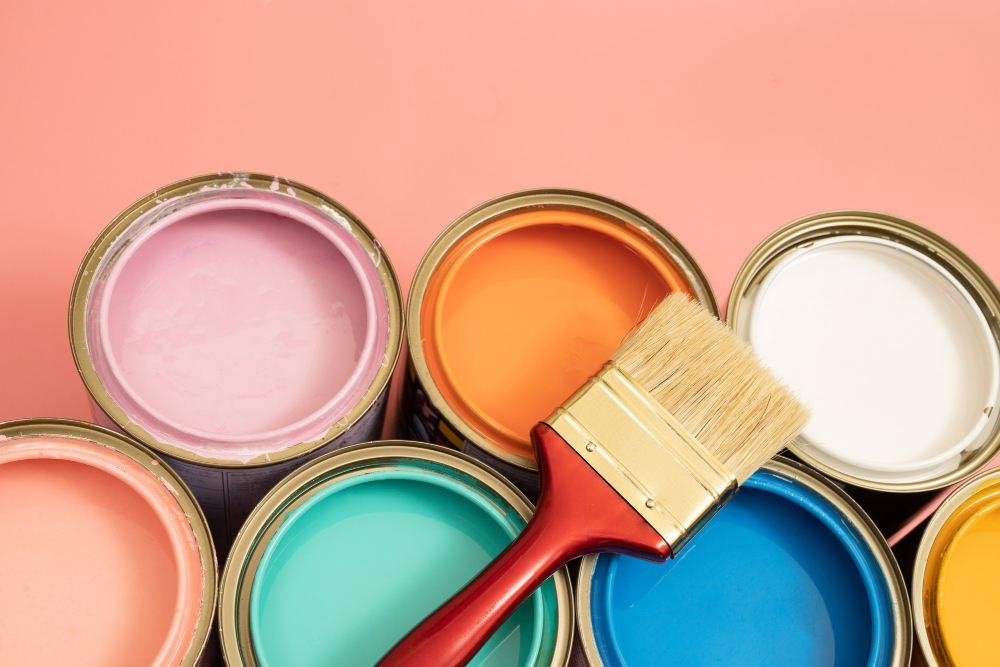
There are several types of ceiling paints available in the market, each with its own set of pros and cons. The most common types include flat/matte finish, eggshell/satin finish, and semi-gloss/high gloss finishes.
Flat or matte finish is ideal for ceilings that have minor imperfections as it helps to hide them effectively. This type of paint has no shine or sheen and provides a smooth surface that doesn’t reflect light.
Eggshell or satin finishes offer more durability than flat/matte finishes while still providing some level of reflection for light sources in your kitchen space. They are also easier to clean than matte/flat options.
Semi-gloss/high gloss paints provide maximum durability but can be challenging when trying to achieve an even application due to their high viscosity levels; they’re best suited for areas prone to moisture like bathrooms rather than kitchens where there’s less humidity present.
Paint Finish Options and Costs
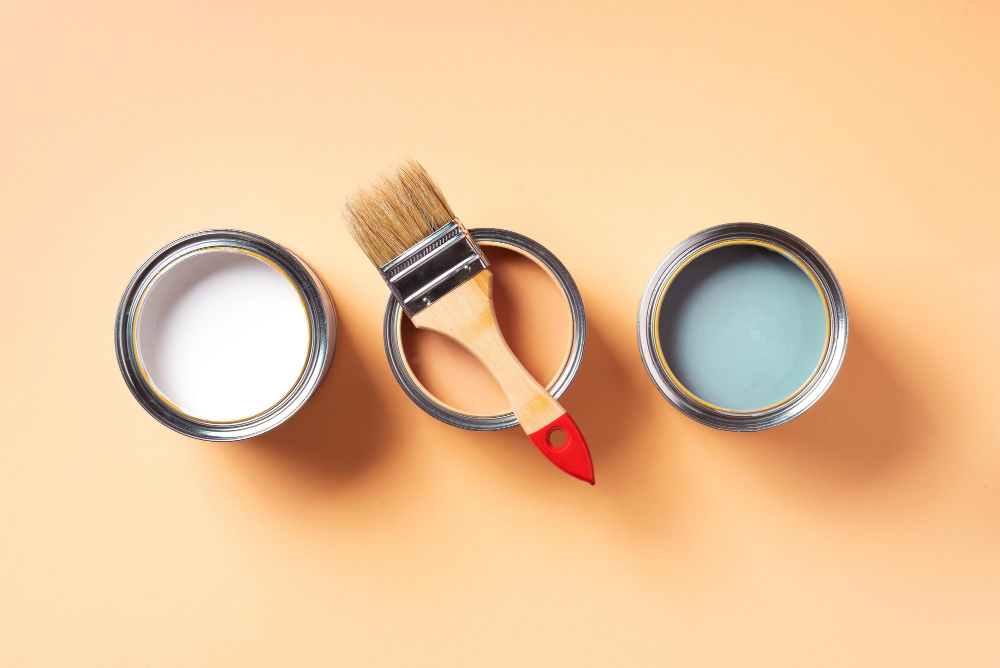
The finish you choose will affect not only the appearance of your ceiling but also its durability and ease of maintenance. There are several types of paint finishes available, each with its own unique characteristics and price point.
Flat or matte finishes are popular for ceilings because they hide imperfections well and provide a smooth, even look. They’re also easy to touch up if needed but can be more difficult to clean than other finishes.
Eggshell or satin finishes have a slight sheen that reflects light nicely while still hiding minor flaws in your ceiling’s surface. These paints are easier to clean than flat/matte options but may require additional coats for full coverage.
Semi-gloss or high-gloss paints offer maximum reflectivity and shine making them ideal for modern kitchens with lots of natural light sources; however, these options tend to highlight any imperfections on your ceiling’s surface so make sure it is properly prepared before application.
Surface Preparation
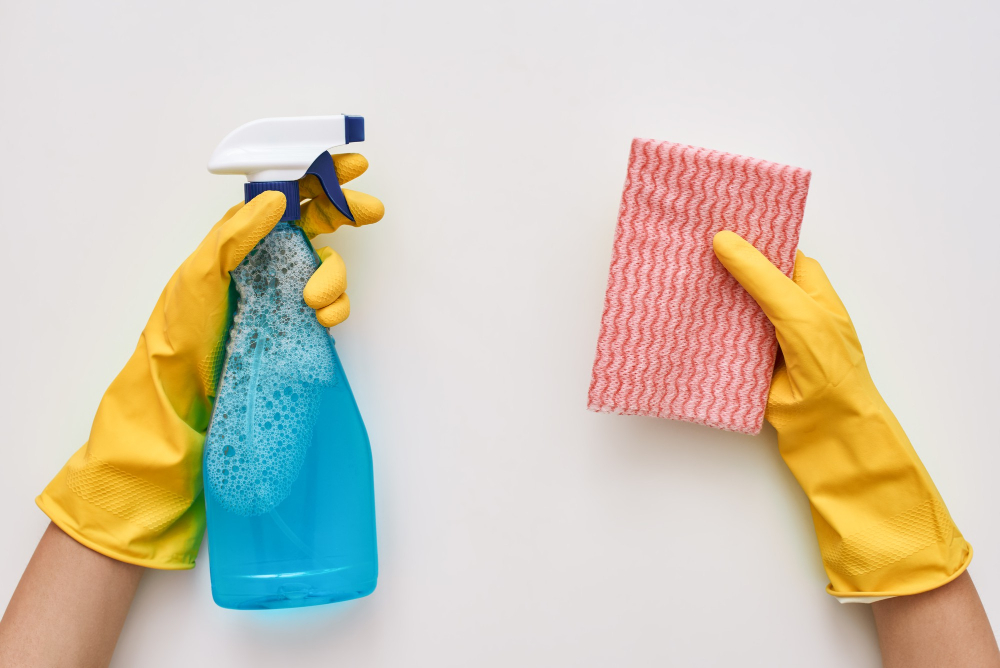
This step is crucial as it ensures that the paint adheres well and lasts longer. The first thing you need to do is clean the ceiling thoroughly using a damp cloth or sponge and mild detergent solution.
Remove any dirt, grease, or stains from the surface.
Next, inspect for cracks or holes in your ceiling and fill them with spackle using a putty knife. Allow time for drying before sanding down any rough spots until they are smooth.
If there are existing layers of paint on your kitchen ceiling that have started peeling off due to moisture damage over time; scrape them off entirely with a scraper tool before applying new coats of paint.
Cover all surfaces below where you will be painting with drop cloths or plastic sheets to protect against drips and spills during application.
Necessary Tools and Supplies
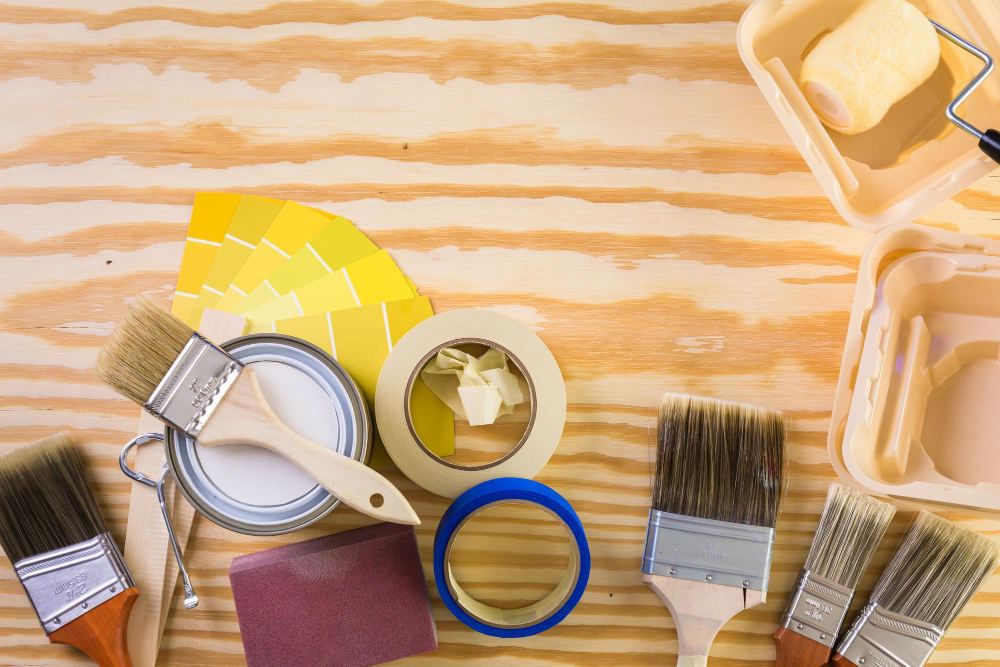
Without them, you risk damaging your ceiling or ending up with an uneven finish that will require costly repairs down the line. Some of the necessary tools and supplies for painting a kitchen ceiling include:
1. Paintbrushes: Choose high-quality brushes in various sizes to ensure even coverage.
2. Rollers: A roller makes it easier to cover large areas quickly.
3. Drop cloths: Protect your floors and countertops from paint splatters by covering them with drop cloths.
4. Painter’s tape: Use painter’s tape around edges where you don’t want paint to bleed through or on fixtures like light switches or vents that can’t be removed during painting.
- Ladder/Stool/Scaffolding (if needed): Depending on how high your ceilings are, you may need additional equipment such as ladders, stools or scaffolding for safety reasons when reaching higher areas of the room.
- Sandpaper/ Sanding block : To smooth out any rough spots before applying primer
7.Primer/Paint : Purchase enough primer/paint based on measurements taken earlier.
DIY Painting: Cost Breakdown

Before you start buying paint and supplies, it’s important to understand the cost breakdown of a DIY project.
The main expenses for a DIY painting project include the cost of paint and materials such as brushes or rollers. The price of these items can vary depending on their quality and brand.
If you don’t already have them at home, there may be additional costs associated with purchasing tools like ladders or drop cloths.
Another factor that affects the overall cost is time spent on preparation work such as cleaning surfaces or repairing any damage before applying paint. This step cannot be skipped since proper surface preparation ensures better adhesion and longer-lasting results.
Time and Labor Involved

The amount of time it takes to paint a kitchen ceiling depends on several factors such as its size, height, condition, and whether or not you’re doing it yourself or hiring professionals.
If you decide to take on this project yourself, be prepared for some hard work. You’ll need to set aside enough time for surface preparation (cleaning and sanding), taping off areas that don’t require painting (such as light fixtures), applying primer if necessary before painting with at least two coats of paint.
The process can be quite tedious especially when working around cabinets or other obstacles in your kitchen space. It’s important to note that while DIY may save money upfront; however taking into account the value of your own personal time spent on this task should also factor into any decision-making process.
Cost of Hiring a Professional Painter

It’s essential to understand that hiring a pro comes with additional costs. The cost of hiring a professional painter varies depending on several factors such as location and experience level.
In general, expect to pay between $200 and $500 for labor alone for painting your kitchen ceiling professionally. This price range can increase significantly based on other factors like paint quality and finish options.
When considering hiring professionals for your kitchen ceiling painting project, be sure to get multiple quotes from different contractors before making any decisions. This will help you compare prices and ensure that you’re getting the best deal possible without sacrificing quality workmanship.
Labor Cost

Labor costs can vary depending on several factors, including your location, the complexity of the job, and whether you choose to hire a professional or do it yourself.
If you decide to hire a professional painter for your kitchen ceiling project, expect to pay an hourly rate or flat fee for their services. The average hourly rate for painters ranges from $20-$50 per hour.
However, this price may increase if there are additional complexities involved in painting your kitchen ceiling.
On average, it takes about 2-3 hours to paint an average-sized kitchen ceiling with one coat of paint. If multiple coats are required or if surface preparation is necessary before painting can begin (such as removing old wallpaper), then expect labor costs to increase accordingly.
DIY enthusiasts who opt not to use professionals will save money on labor but should be prepared for more time-consuming work and potential mistakes that could lead them back into hiring professionals later down the line at higher expenses than they would have paid initially had they hired someone else right away.
Paint and Materials Cost

The price range for paints varies widely, from budget-friendly options to high-end products with premium features such as mold resistance or easy-clean surfaces. Generally, higher-quality paints will be more expensive but may offer better coverage, durability, and longevity.
In addition to paint costs, you’ll also need to consider other materials required for the job such as brushes or rollers. These items can add up quickly if you don’t already have them on hand.
When planning your project budget, it’s essential to factor in all material costs upfront so that there are no surprises later on down the line. Keep in mind that while cheaper options may seem like a good way to save money initially; they could end up costing more over time due to their lower quality.
Additional Expenses to Consider

These expenses can add up quickly, so it’s important to factor them into your budget from the start. One such expense is equipment rental or purchase if you plan on doing the job yourself.
You may need ladders, scaffolding or other tools depending on how high your ceiling is and what type of surface you’re working with.
Another expense to keep in mind is any necessary repairs before painting can begin. If there are cracks or holes in your ceiling that need patching up, this will increase both time and material costs.
Don’t forget about cleanup costs! Painting a kitchen ceiling can be messy work – drop cloths may not catch all drips – so make sure to account for cleaning supplies like rags and solvents when planning out your budget.
Cost Comparison: DIY Vs. Professional

While DIY painting may seem like the more affordable choice, there are several factors to consider before making a decision.
Firstly, if you’re not experienced in painting ceilings or don’t have the necessary tools and supplies on hand, you may end up spending more money than anticipated. Mistakes made during DIY projects can lead to costly repairs down the line.
On the other hand, hiring a professional painter means that you’ll be paying for their expertise and experience. They will also come equipped with all of the necessary tools and supplies needed for your project.
To determine which option is best for your budget and needs, compare quotes from different painters in your area with an estimate of how much it would cost to purchase all of the materials needed for a DIY project. Keep in mind that while hiring professionals might be pricier upfront; they often provide better quality workmanship that lasts longer than amateur work done by homeowners themselves.
How to Save On Painting Costs

One of the most effective ways is to do some or all of the work yourself. While hiring a professional painter may seem like the easiest option, it’s also likely to be the most expensive.
By taking on some of the tasks yourself, such as surface preparation and cleanup, you can significantly reduce your labor costs.
Another way to save money is by choosing a lower-cost paint option that still meets your needs in terms of quality and durability. For example, flat paints tend to be less expensive than glossier finishes but may not hold up as well over time.
You can also consider purchasing supplies in bulk or waiting for sales at home improvement stores before starting your project. This will help keep material costs down without sacrificing quality.
Don’t forget about negotiating with painters if you decide to hire one for part or all of your project! Many professionals are willing to work with clients on pricing if they know they’ll get repeat business from them in future projects.
Choosing a Reputable Painter

Not all painters are created equal. To avoid getting ripped off or ending up with subpar results, it’s important to choose a reputable painter.
Start by asking for recommendations from friends and family members who have had their ceilings painted recently. You can also check online reviews on websites like Yelp or Angie’s List to see what other customers have said about local painters.
Once you’ve narrowed down your list of potential candidates, be sure to ask for references and examples of their previous work. A good painter should be able to provide you with photos of completed projects as well as contact information for satisfied clients.
It’s also important to make sure that the painter is licensed and insured in case anything goes wrong during the project. Don’t hesitate to ask about these credentials before hiring someone.
Get multiple quotes from different painters so that you can compare prices and services offered before making your final decision.
Maintenance Tips for Painted Ceilings
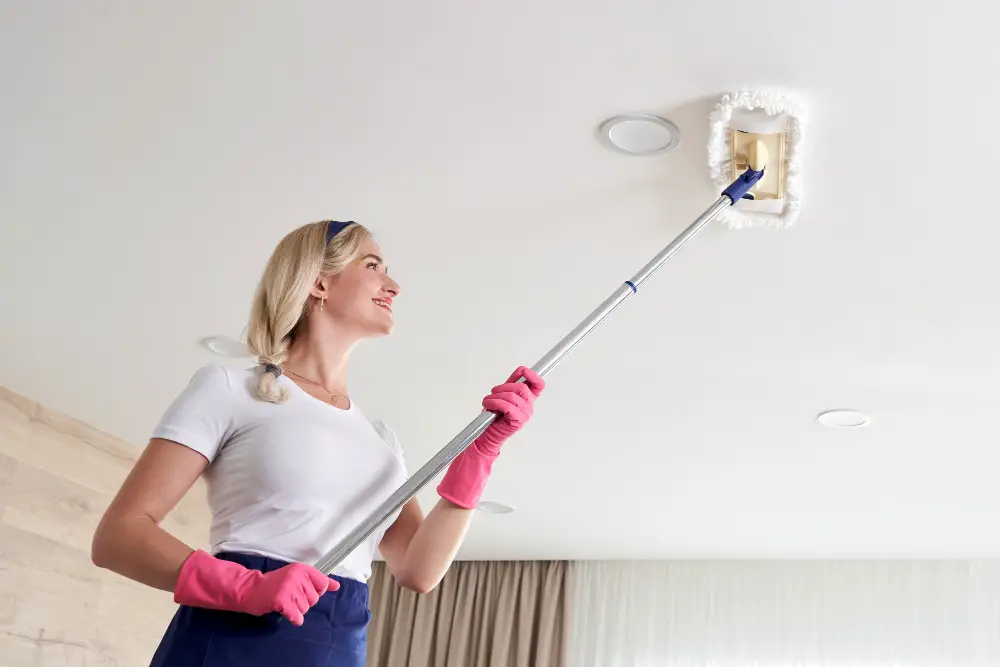
Here are some maintenance tips for painted ceilings:
1. Clean regularly: Dust and dirt can accumulate on a ceiling over time, making it look dull and dingy.
Use a soft-bristled brush or vacuum attachment to gently remove any debris.
2. Avoid moisture: Moisture can cause paint to peel or crack, so be sure to fix any leaks or water damage as soon as possible.
3. Touch up when necessary: Over time, small scratches or chips may appear on your painted ceiling due to wear and tear.
Keep some extra paint handy for touch-ups when needed.
4. Be gentle with cleaning products: Harsh chemicals can damage painted surfaces, so use mild soap solutions when cleaning your kitchen ceiling.
Paint and Ceiling Trends for Kitchens
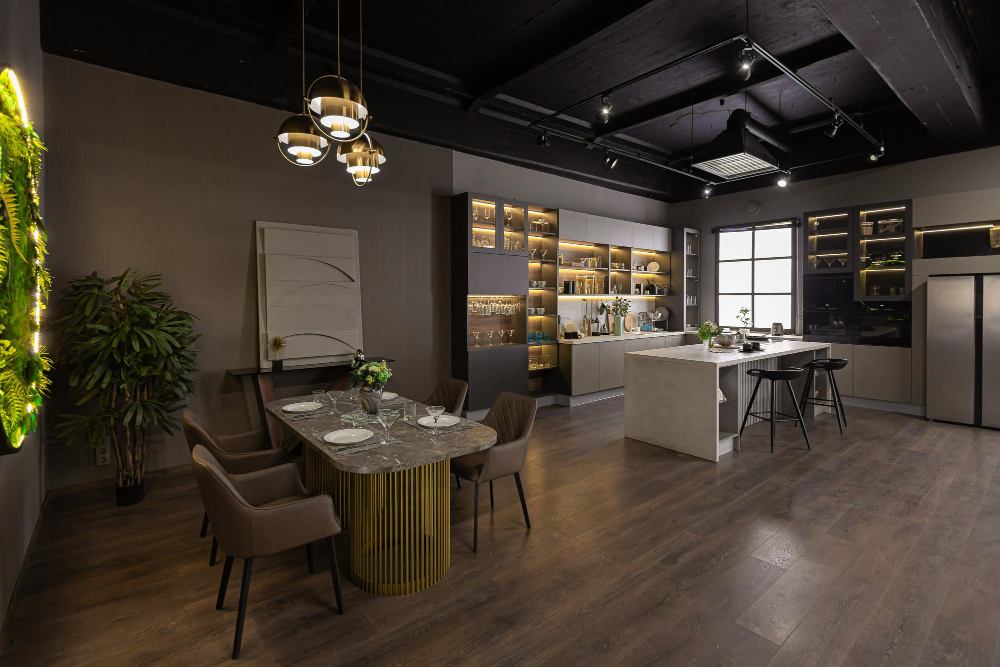
A painted ceiling can add depth and character to your space. In recent years, there has been a shift towards bolder colors and patterns on kitchen ceilings.
Darker shades like navy blue or charcoal gray are becoming increasingly popular for creating a dramatic effect in modern kitchens.
Another trend that’s gaining traction is the use of metallic paints or finishes on ceilings. This adds an element of glamour and sophistication to any kitchen space.
If you’re not ready for such bold choices but still want something unique, consider adding texture with stenciling or wallpapering your ceiling with subtle designs that complement your overall decor scheme.
Maintenance Recommendations
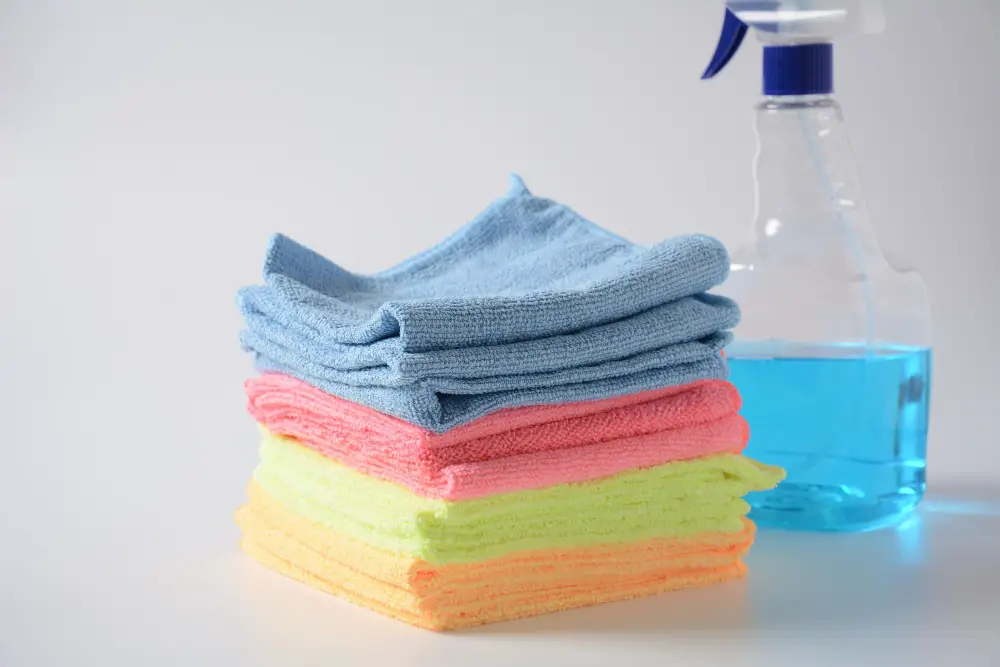
To keep your painted ceiling looking fresh and new, there are a few maintenance recommendations to follow.
Firstly, avoid using harsh chemicals or abrasive cleaning tools that can damage the paint finish. Instead, use a soft cloth or sponge with mild soap and water for regular cleaning.
Secondly, be mindful of any moisture issues in the kitchen as this can cause peeling or cracking of the paint over time. Proper ventilation is key to preventing excess moisture buildup.
Lastly, consider touching up any scuffs or scratches on the painted surface as soon as they appear. This will prevent further damage from occurring and extend the life of your freshly painted ceiling.
FAQ
How much does it cost to paint a kitchen ceiling UK?
The average cost to paint a kitchen ceiling in the UK ranges from £103 to £2193, with the price per square metre being £10 to £15 and ceiling paint prices ranging from £3 to £13.
What kind of paint do you use on kitchen ceilings?
Use flat, matte acrylic paint on kitchen ceilings, as it doesn’t reflect light or draw attention away from the room and doesn’t require glossy, durable paint due to minimal wear and tear.
How much should I charge to paint a room and ceiling?
You should charge $4.69 per square foot, which includes walls, trim, and ceilings, for painting a room and ceiling, though prices may increase if repairs are needed beforehand.
What factors determine the cost of painting a kitchen ceiling?
The cost of painting a kitchen ceiling is determined by factors such as the size of the ceiling, paint type, labor fees, and any additional preparation or special requirements needed.
How long does it typically take to paint a kitchen ceiling professionally?
It typically takes a professional about 4 to 6 hours to paint a kitchen ceiling.
Can I save money by painting my kitchen ceiling myself, and what are the potential downsides?
Yes, you can save money by painting your kitchen ceiling yourself, but potential downsides include uneven coverage, paint drips, and extra time commitment.




